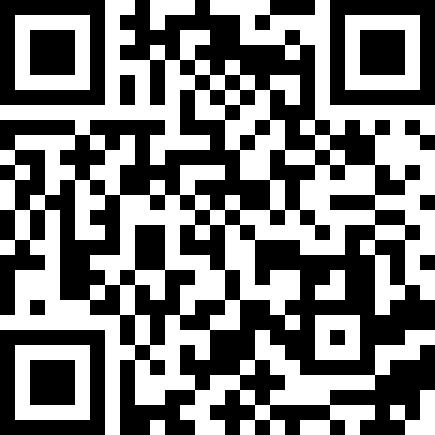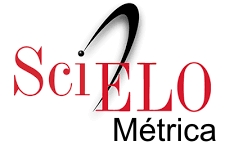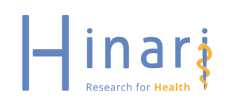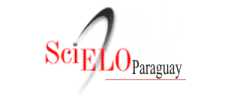Prevalencia de anticuerpos antinucleares en médicos residentes aparentemente sanos del Hospital de Clínicas, San Lorenzo.
Resumen
Introducción: los anticuerpos antinucleares son muy utilizados en la práctica médica como marcadores de autoinmunidad y en el diagnóstico de enfermedades autoinmunes. Sin embargo, estos anticuerpos son la expresión de otros trastornos más allá de las colagenopatías e incluso pueden estar presentes en la población aparentemente sana sin representar un riesgo para la salud de estos en el futuro.
Objetivo: determinar la prevalencia de anticuerpos antinucleares en médicos residentes aparentemente sanos del Hospital de Clínicas, San Lorenzo, en el año 2021.
Material y métodos: se realizó un estudio descriptivo prospectivo y transversal en 150 médicos residentes aparentemente sanos en el Hospital de Clínicas de la ciudad de San Lorenzo, Paraguay, en el periodo de junio a septiembre de 2021. Se determinaron los anticuerpos antinucleares tipo inmunoglobulina G mediante inmunofluorescencia indirecta en células HEp-2.
Resultados: la prevalencia de anticuerpos antinucleares fue 11,3%. La mayoría de los sujetos con resultados positivos fueron mujeres (76,5%, p<0,05). Las titulaciones más frecuentes fueron 1:80 y 1:160 por igual (35,3% cada una) y entre los sujetos reactivos el patrón nuclear granular fino denso (AC2) fue el más prevalente (52,9%).
Conclusión: la prevalencia de anticuerpos nucleares fue 11,3%, la mayor frecuencia se vio en mujeres, las titulaciones más comunes fueron 1:80 y 1:160 y el patrón más habitual fue el nuclear granular fino denso.
Citas
2.Masetti R, Tiri A, Tignanelli A, Turrini E, Argentiero A, Pession A. Autoimmunity and cancer. Autoimmun Rev [Internet]. 2021 [cited 2021 Mar 3];20(9):102882. Available from: https://www.sciencedirect.com/science/article/abs/pii/S1568997221001555?via%3Dihub. https://doi.org/10.1016/j.autrev.2021.102882
3.Pashnina IA, Krivolapova IM, Fedotkina TV, Ryabkova VA, Chereshneva M V, Churilov LP, Chereshnev VA. Antinuclear autoantibodies in health: Autoimmunity is not a synonym of autoimmune disease. Antibodies [Internet]. 2021 [cited 2021 Mar 3];10(9):1–26. Available from: https://pubmed.ncbi.nlm.nih.gov/33668697/. 10.3390/antib10010009
4.Mendez-Rayo T, Ochoa-Zárate L, Posso-Osorio I, Ortiz E, Naranjo-Escobar J, Tobón GJ. Interpretation of autoantibodies in rheumatological diseases. Rev Colomb Reumatol. 2018;25(2):112–25. https://doi.org/10.1016/j.rcreu.2018.02.004
5.La Rosa Fabián CB, Lozano Fernández VS. Prevalencia de anticuerpos antinucleares en personas aparentemente sanas. Lima-Perú. Rev Latinoam Patol Clin Med Lab. 2017;64(1):8–13.
6.Akmatov MK, Röber N, Ahrens W, Flesch-janys D, Fricke J, Greiser H, et al. Anti-nuclear autoantibodies in the general German population: prevalence and lack of association with selected cardiovascular and metabolic disorders—findings of a multicenter population-based study. Arthritis Res Ther. 2017;19(1):127. 10.1186/s13075-017-1338-5
7.Toledo P, Sáenz K, Vivar N. Valores de referencia de anticuerpos antinucleares en personas aparentemente sanas. Quito-Ecuador. Rev Mex Patol Clin Med Lab. 2010;57(4):190–5.
8.Dinse GE, Parks ChG, Weinberg CR, Co CA, Wilkerson J, Zeldin DC, et al. Increasing prevalence of antinuclear antibodies in the United States. Arthritis Rheumatol. 2020;72(6):1026–35. doi: 10.1002/art.41214
9.Hayashi N, Koshiba M, Nishimura K, Sugiyama D, Nakamura T, Morinobu S, et al. Prevalence of disease-specific antinuclear antibodies in general population: estimates from annual physical examinations of residents of a small town over a 5-year period. Mod Rheumatol [Internet]. 2008 [cited 2021 Jun 10];18(2):153–60. Available from: https://pubmed.ncbi.nlm.nih.gov/18283522/. 10.1007/s10165-008-0028-1
10.Simão F, Ferreira AP, Vullo C, Xavier C, Huber G, Quiroz A, et al. Paraguay: Unveiling migration patterns with ancestry genetic markers. Forensic Sci Int Genet [Internet]. 2017 [cited 2021 Jun 10]; Suppl Series 6:e226–e8. Available from: https://www.fsigeneticssup.com/article/S1875-1768(17)30025-2/pdf. http://dx.doi.org/10.1016/j.fsigss.2017.09.104
11.Carpinelli MM, Giménez V, Ferreira L, Rovira C, Picaguá E, Granados E. Frecuencia de los patrones de anticuerpos anti-nucleares en pacientes con sospecha clínica de LES. Mem Inst Investig Cienc Salud. 2010;8(2):27–33.
12.Aguirre Zamorano MAMA, López Pedrera R, Cuadrado Lozano MJ. Lupusinducido por fármacos. Med Clin (Barc). 2010;135(3):124–9. 10.1016/j.medcli.2009.04.035
13.Pretel M, Marquès L, España A. Lupus eritematoso inducido por fármacos. Actas Dermosifiliogr. 2014;105(1):18–30. doi: 10.1016/j.ad.2012.09.007
14.Salle V. Coronavirus-induced autoimmunity. Clin Immunol [Internet]. 2021 [cited 2021 Jun 20];226:108694. Available from: https://linkinghub.elsevier.com/retrieve/pii/S1521661621000310. https://doi.org/10.1016/j.clim.2021.108694
15.Serrano-Osuna R, López-López RM, Brito-Zurita OR, Sabag-Ruiz E, Pérez-Fernández H, Ornelas-Aguirre JM. Seroprevalencia de anticuerpos antinucleares en donadores de sangre del valle del Yaqui. Cir Cir. 2014;82(6):619–27.
16.Racoubian E, Zubaid RM, Shareef MA, Almawi WY. Prevalence of antinuclear antibodies in healthy Lebanese subjects, 2008–2015: a cross-sectional study involving 10,814 subjects. Rheumatol Int. 2016;36(9):1231–6. doi: 10.1007/s00296-016-3533-0
17.Li X, Liu X, Cui J, Song W, Liang Y, Hu Y, Guo Y. Epidemiological survey of antinuclear antibodies in healthy population and analysis of clinical characteristics of positive population. J Clin Lab Anal [Internet]. 2019 [cited 2021 Jun 20];33(8):e22965. Available from: https://pubmed.ncbi.nlm.nih.gov/31313384/. 10.1002/jcla.22965
18.Marin GG, Cardiel MH, Cornejo H, Viveros ME. Prevalence of antinuclear antibodies in 3 groups of healthy individuals: Blood donors, hospital personnel, and relatives of patients with autoimmune diseases. J Clin Rheumatol. 2009;15(7):325–9.
19.Aragón C-C, González JD, Posso-Osorio I, Naranjo-Escobar J, Puerta G, Echeverri A, et al. Anticuerpos anti-DFS70: un nuevo autoanticuerpo útil en la exclusión de patologías autoinmunes. Rev Colomb Reumatol. 2018;25(2):104–11.
20.Mahler M, Parker T, Peebles CL, Andrade LE, Swart A, Carbone Y, et al. Anti-DFS70/LEDGF antibodies are more prevalent in healthy individuals compared to patients with systemic autoimmune rheumatic diseases. J Rheumatol. 2012;39(11):2104–10. doi:10.3899/jrheum.120598
21.Conrad K, Röber N, Andrade LEC, Mahler M. The clinical relevance of anti-DFS70 autoantibodies. Clin Rev Allergy Immunol [Internet]. 2017 [cited 2021 Feb 10];52(2):202–16. Available from: https://pubmed.ncbi.nlm.nih.gov/27350273/. doi:10.1007/s12016-016-8564-5
22.von Mühlen CA, Garcia-De La Torre I, Infantino M, Damoiseaux J, Andrade LEC, Carballo OG, et al. How to report the antinuclear antibodies (anti-cell antibodies) test on HEp-2 cells: guidelines from the ICAP initiative. Immunol Res [Internet]. 2021 [cited 2021 Feb 10];69(6):594–608. Available from: https://pubmed.ncbi.nlm.nih.gov/34625914/. doi:10.1007/s12026-021-09233-0
23.Yeo AL, Le S, Ong J, Connelly K, Ojaimi S, Nim H, et al. Utility of repeated antinuclear antibody tests: a retrospective database study. Lancet Rheumatol [Internet]. 2020 [cited 2021 Feb 10];2(7):e412–7. Available from: https://www.thelancet.com/journals/lanrhe/article/PIIS2665-9913(20)30084-9/fulltext#:~:text=This%20study%20shows%20a%20very,addition%20to%20the%20ANA%20test. https://doi.org/10.1016/S2665-9913(20)30084-9

















